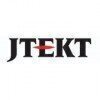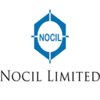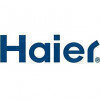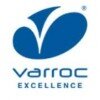Senior Production Engineer
Senior Production Engineer Interview Questions and Answers for Freshers
Asked in Alchemie Finechem

Q. What is the difference between unit operation and unit process?
Unit operation refers to a single step in a process, while unit process involves a series of operations to achieve a specific goal.
Unit operation is a single step in a process, such as mixing or filtration.
Unit process involves a series of operations to achieve a specific goal, such as refining crude oil into gasoline.
Unit operations are often combined to form a unit process.
Unit processes are used in chemical engineering and manufacturing.
Understanding the difference between...read more

Asked in Hamilton

Q. Briefly summarize the main functions of your role.
Oversee production processes, ensuring efficiency, quality, and safety in manufacturing operations.
Manage production schedules to meet deadlines and optimize resource allocation.
Implement quality control measures to maintain product standards, such as regular inspections.
Collaborate with cross-functional teams to improve production workflows, for example, introducing lean manufacturing techniques.
Analyze production data to identify areas for improvement and reduce waste, lead...read more

Asked in Hamilton

Q. Describe your roles and responsibilities in your previous company.
As a Senior Production Engineer, I led projects, optimized processes, and ensured quality standards in manufacturing operations.
Managed a team of engineers to streamline production processes, resulting in a 15% increase in efficiency.
Implemented quality control measures that reduced defects by 20%, enhancing product reliability.
Collaborated with cross-functional teams to design and launch new products, meeting tight deadlines.
Conducted root cause analysis on production issues...read more

Asked in JTEKT

Q. Explain the induction hardening process and related troubleshooting in detail.
Induction hardening is a heat treatment process that increases the hardness of steel by induction heating followed by rapid cooling.
Induction hardening uses electromagnetic induction to heat the surface of the metal quickly.
The process typically involves heating the part to a temperature of 800-1000°C, followed by quenching in water or oil.
Common issues include uneven hardening, which can be caused by inconsistent heating or improper quenching.
Another issue is distortion, whi...read more

Asked in National Organic Chemical Industries

Q. How do you calculate heat duty?
Heat duty can be found by calculating the amount of heat required to raise the temperature of a substance or system.
Determine the mass of the substance or system
Determine the specific heat capacity of the substance
Determine the change in temperature
Use the formula Q = mcΔT to calculate the heat duty
Q = heat duty, m = mass, c = specific heat capacity, ΔT = change in temperature

Asked in Sundaram Clayton

Q. Troubleshooting of CNC programming
Troubleshooting CNC programming involves identifying and resolving errors in the code.
Check for syntax errors in the code
Verify that the correct tool paths are being used
Ensure that the machine is properly calibrated
Inspect the tooling for wear or damage
Monitor the machine during operation for any abnormalities
Senior Production Engineer Jobs




Asked in Hitachi Energy

Q. Can you describe your background?
I have a strong background in engineering, specializing in production processes, quality control, and team leadership.
Over 10 years of experience in production engineering, focusing on optimizing manufacturing processes.
Led a team of engineers in a project that reduced production costs by 15% through process improvements.
Implemented Lean manufacturing principles, resulting in a 20% increase in efficiency in the assembly line.
Collaborated with cross-functional teams to enhance...read more
Asked in Vaijayant Udyog

Q. Problem solving techniques
Problem solving techniques involve identifying the root cause of an issue and developing a plan to address it.
Gather information and data to fully understand the problem
Break down the problem into smaller, more manageable parts
Brainstorm potential solutions and evaluate their feasibility
Implement the chosen solution and monitor its effectiveness
Continuously assess and adjust the solution as needed
Share interview questions and help millions of jobseekers 🌟


Asked in Sundaram Clayton

Q. Types of QC tools
QC tools are used to ensure product quality. Types include statistical process control, Pareto charts, and fishbone diagrams.
Statistical process control
Pareto charts
Fishbone diagrams
Control charts
Histograms
Scatter diagrams
Check sheets
Flowcharts
Cause-and-effect diagrams
Interview Questions of Similar Designations
Interview Experiences of Popular Companies








Reviews
Interviews
Salaries
Users

















